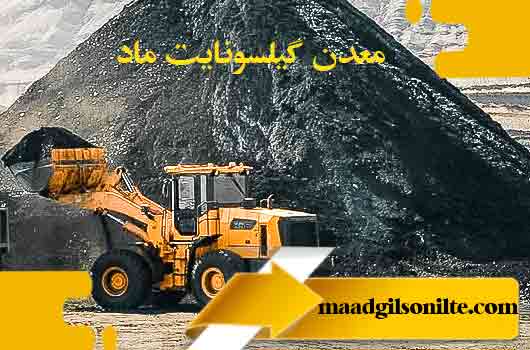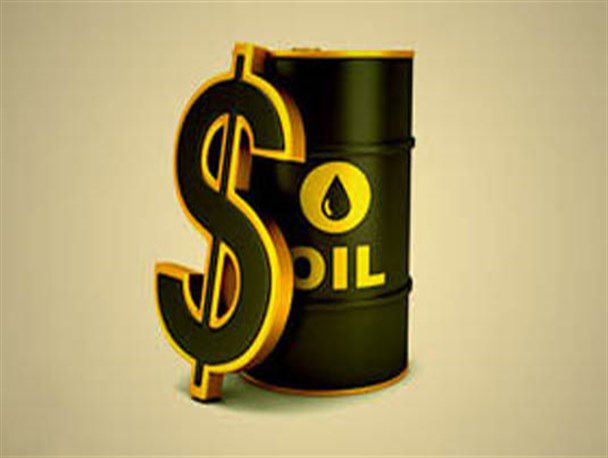
main economic resources, is used all over the world due to the presence of valuable minerals that can be exploited. In this article, the concept of mine and how it is formed, how to find and extract mines, different types of mines in the world and Iran, and its impact on the global economy will be discussed.”
A mine is a place that is accumulated from all kinds of metal minerals, stones and rare materials, which exist under the surface of the earth and sometimes on the surface of the earth. These materials are economically exploitable and are used to produce materials such as metals, fossil fuels, chemical products and other uses.
The history of the discovery and exploitation of mines goes back thousands of years. Since ancient times, humans have used mines to extract metals and precious stones. In the early times, mining was mostly done on the surface and using simple tools. With the development of technology and mining tools, the methods of exploitation of mines also evolved.
In ancient history, many cultures used mines to extract metals such as gold, bitumen, silver and copper. For example, Egyptians extracted precious stones using simple tools such as adzes and chisels. In India, mines were used to extract diamonds and jewels. Also, in ancient times, exploitation of mines for iron extraction was also common.
The concept of mine structure
Mine structure refers to all the components in a mine. These components include rock, sediments, volcanoes, soil, and other materials that exist below the surface of the earth and sometimes on the surface of the earth. These components are naturally obtained and can form ore.
The structure of mines consists of various components, which are explained below for each of these components.
Rock
Mine rock or mine soil refers to materials that contain valuable minerals such as gold, silver, copper, etc. According to their type and characteristics, these minerals can be used as raw materials in various industries.
Sediments
Sediments are substances that are obtained as sediment in water or sediment in soil. These materials include materials such as sand, gravel, silt and other materials that are used as raw materials in industries such as construction, chemical industries, etc.
Volcanoes
Volcanoes are different structures that are used due to the presence of minerals in them. These structures include materials such as lava, volcanic sediments, and volcanic rocks.
Soil
Soil is the material that exists on the surface of the earth. These materials include fine particles such as organic and mineral materials, water and air and other materials that are mixed in the soil. Soil is used as an important resource for agriculture and horticulture and also plays an important role as a place for plants to grow and maintain biodiversity in the environment.
Types of mines
The shape of the deposit refers to the shape and distribution of minerals inside the deposit. In this article, the types of deposits will be investigated.
Basic shape
In the form of a base deposit, the minerals are in the form of a large block. This form of deposit is mostly seen in underground mines, and to extract minerals from inside the block, the block must first be divided into smaller pieces.
The shape of the veins
In the vein deposit form, the minerals are in the form of narrow and long veins that are cut from the rock. This form of deposit is mostly seen in underground mines, and in order to extract deposit materials from inside the veins, these veins must be opened using special devices that cut small pieces of rock.
Scattered shape
In the form of dispersed deposits, minerals are dispersed in the form of small particles on the surface of the earth or in groundwater. This form of deposit is mostly seen in open pit mines, and methods such as crushing and screening are used to extract deposit materials from inside the particles.
lumpy shape
In the form of a mass deposit, the deposit materials are located in the form of large and uneven masses on the surface of the earth. This type of deposit is mostly seen in open pit mines, and to extract the deposit materials from the piles, the piles must first be divided into smaller pieces.
The shape of the minerals
In the mineral form of ores, minerals are in the form of small ores that are scattered inside the rock. This mineral form is mostly seen in underground mines, and to extract minerals from the ores, these ores must be opened using special devices and then the minerals are separated from the ores.
Paste form
In the mineral paste form, the minerals are in the form of a dilute paste in water or a solution. This form of mineral is mostly observed in the mineral that exists as a solution in water or another solution. In order to extract minerals from the pulp, it is necessary to first separate the pulp from non-mineral materials and then separate the minerals from the pulp using methods such as evaporation, distillation and electrolysis.
Finding mines is divided into two types of exploration and extraction. In the exploratory stage, the deposit is obtained by exploring various resources and working in circulation. In the extraction stage, the ore is obtained using different methods.
In the past, mining technology was done traditionally, but with the advancement of mining technology, there are more advanced methods for mining. Today, the use of various technologies such as all automatic machines, heavy machinery and other new technologies has made it easier to obtain minerals such as bitumen extraction.
Mines are divided into two categories, metallic and non-metallic.
Metal mines
Metal mines include minerals such as gold, silver, copper, bauxite, iron, nickel, zinc and platinum. Due to having suitable physical and chemical properties, these mines are used in various industries such as metal industries, automobile manufacturing, electronic industries, etc.
Non-metallic mines
Non-metallic minerals include minerals such as gypsum, limestone, salt, marble, natural bitumen and gilsonite, sand, kaolin and barite. Due to having suitable physical and chemical properties, these materials are used in various industries such as construction industries, chemical industries, etc.
Iran is one of the important countries in the field of mining due to its rich mineral reserves. In Iran, there are minerals such as gold, copper, lead and zinc, aluminum, iron, coal, oil and natural gas. In the following, some important mines of Iran will be introduced.
1. Gold mines: There are gold deposits in Iran in the provinces of South Khorasan, West Azerbaijan, Fars, Kerman and Kurdistan. Some of the gold mines in Iran include Chagharat gold mine in South Khorasan province, Heskoiye gold mines in Fars province and Takab gold mines in West Azarbaijan province.
2. Copper mines: There are copper deposits in Iran in the provinces of Kerman, Kurdistan, Sistan and Baluchestan and North Khorasan. Some copper mines in Iran include Sarcheshme copper mines in Kerman province, Songun copper mines in Kurdistan province, and Shahrbabek copper mine in Kerman province.
3. Aluminum mines: There are aluminum deposits in Iran in Fars and Khuzestan provinces. Some aluminum mines in Iran include Jajarm aluminum mine in North Khorasan province, Zarch aluminum mines in Fars province and Tabas aluminum mines in South Khorasan province.
4. Coal mines: There are coal mines in Iran in the provinces of Khuzestan, Kerman, Sistan and Baluchestan and Mazandaran. Some coal mines in Iran include Shahrekord coal mines in Chaharmahal and Bakhtiari provinces, Sangan coal mines in Kerman province and Nir coal mines in Khuzestan province.
5. Oil and natural gas mines: Iran is one of the countries rich in oil and natural gas resources. There are oil and natural gas mines in Iran in different areas such as the Persian Gulf, the Caspian Sea and the Oman Sea.
6. Lead and zinc mines: There are lead and zinc deposits in Iran in the provinces of Zanjan, Yazd, North Khorasan. 7. Iron mine: There are iron mines in Iran in the provinces of Khorasan Razavi, Fars, and Khuzestan. Some iron mines in Iran include Chagharat iron mine in South Khorasan province, Gol Gohar iron mines in Khuzestan province, and Chadormello iron mines in Fars province.
8. Bauxite mines: There is a bauxite deposit in Iran in Hormozgan province. Some bauxite mines in Iran include Jajarm bauxite mine in North Khorasan province and Jiroft bauxite mine in Kerman province.
9. Phosphate mines: There is a phosphate deposit in Iran in Yazd province.
10. Bitumen and gilsonite mines: There are gilsonite and natural bitumen mines in Gilangreb.
These are only some of the important mines of Iran and there are other mines in Iran. Exploitation of these mines for the production of various products in many industries is very important as one of the most important sources of income and production in the country.
Therefore, mines are used as one of the main economic resources around the world to produce materials such as metals, fossil fuels, chemical products and other uses. Mining using advanced technologies improves the acquisition of minerals and contributes to added value and job creation in countries with mineral resources.
In this article, we discussed the introduction and concept of mining, the types of deposits and different forms, the deposits in Iran and their structure. As one of the important economic resources, mines are used in various industries, and the types of forms of mines are also different based on the type and location of the mine.

